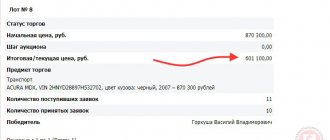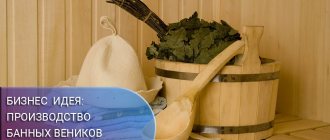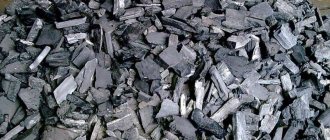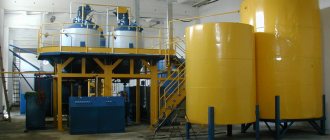The popularity of interior doors among the population is comparable only to plastic windows. For both the former and the latter, demand is stable even during the economic crisis. But since interior doors serve not only a functional purpose (to open/close access to the room), but also an aesthetic one - they should look impressive and please buyers.
Even if you make doors from environmentally friendly materials (for example, solid wood), but do not give the model a presentation appearance, the business will most likely be doomed to failure.
What does the consumer like? Criterias of choice
The product range is the most important decision for future production. And it should be determined taking into account consumer preferences.
Main types of interior doors:
From the array
The door leaf is made from wood slats (an array of different species - from soft, such as pine, to hard oak and more valuable ones). The bars are spliced using glue and exposure under pressure, the canvas is sanded, calibrated and varnished, or covered with decorative finishing (for example, veneer of expensive species).
For premium doors, a more complex technology is possible: partial tinting, mosaic fusion, inlay are used, thanks to which the door leaf turns into a real work of art.
Wooden with veneer finishing
Doors of the middle price segment. The base is usually inexpensive wood in the form of boards, fastened into a frame, covered with veneer on the outside.
For voids, various fillers are used, for example, corrugated cardboard.
Laminated
When laminating, a film of various colors and textures is applied to a base frame made of chipboard or MDF. This production technology makes it possible to imitate various materials (and not only wood), but the wear resistance of such doors is the lowest among all types;
Plastic, aluminum and their various combinations
A combination of materials such as plastic and aluminum is used to equip non-residential premises (offices, medical, government, educational institutions).
According to manufacturers, trends in consumer demand can be characterized as follows: “from cheap to expensive.” Today, veneered doors are most in demand, but with a base not made of chipboard, as was the case a couple of years ago, but made of solid wood. Why?
The reasons are obvious:
- reliability – interior doors are subject to quite a large load (especially if there is a child in the house). And a solid mass always outperforms a frame structure, and hardwood veneer will protect the canvas better than laminate and other film materials;
- veneer is homogeneous in structure (compared to furniture panels), so it is easy to choose the most similar doors for different rooms;
- naturalness of the material;
- price – the cost of doors made of inexpensive wood, lined with veneer, “fits” into the category of the middle price segment (about $250), but they will last much longer than frame products. And if necessary, such doors can be restored.
Types of possible products
Interior doors are popular both at the level of wholesale purchases and in the retail segment. At the same time, the main thing for the manufacturer is to provide a sufficiently wide range, reasonable cost and adequate quality of products. Ideally, the workshop should have the ability, along with standard models, to produce custom-made products. However, at the initial stage, you can focus on one option.
It is also important to determine which interior doors will become the main product of the enterprise. The most popular items are the following:
- Interior doors made of solid wood. As a rule, in this case we are talking about expensive products of the elite segment, but it is possible to reduce the cost of the technology and offer economical options, focusing on the environmental friendliness and durability of the products.
- Interior doors made of MDF. These are inexpensive products, the main disadvantage of which is their sensitivity to high humidity (i.e. they are not suitable for installation, for example, in bathrooms and saunas).
- Interior paneled doors. Also belongs to the budget segment. In this case, the product is assembled from individual elements - panels (they can be made from solid wood or using frame technology).
- Interior sliding systems. This is a good solution for small apartments and modern interiors.
- Glass interior doors. As a rule, they are used in offices and high-tech rooms.
- Veneer interior doors. The cost of products depends on the types of wood used - typical for Russia, noble or exotic.
The production of interior doors made of plastic deserves special attention. It should be understood that this area belongs to a radically different production segment that requires special equipment and components. Accordingly, it will not be considered in this article.
Organizational form and sales channels
The legal form for a business should be chosen after first assessing the potential buyer.
Here are the options:
- large wholesale - construction companies and state-owned enterprises (usually, there is a tender basis, which is quite difficult for a new player in the market to win);
- concluding agreements with networks of construction markets and specialized stores;
- sales through own retail outlets;
- dealer network.
In practice, an enterprise engaged in the production of interior doors is rarely limited to one sales option - to increase sales, all available “channels” should be developed.
Therefore, the optimal organizational form would be a legal entity - LLC (many construction companies and supermarkets simply do not cooperate with individual entrepreneurs).
The following codes must be indicated in the types of activities:
- 20.30.1 Production of wooden building structures and joinery;
- 51.53.24 Wholesale trade of other construction materials.
A license for the production of interior doors is not required. But if you plan to provide installation as an additional service, please note that without special permission, installation of door panels is only allowed in place of existing openings. If the project involves expansion or any other change in the opening, then an appropriate construction license is required.
Subtleties of organization
Workshop location
You can set up a small production of interior doors in your personal garage or rent a small utility room on the outskirts of the city. To organize the work process, the room is divided into several compartments:
- Manufacturing workshop.
- Preparing the finished product for painting.
- Coating with paints and varnishes.
- Drying.
- Package.
On average, to produce 20-30 products per day on your own, 30 square meters is enough. m. There are no special requirements for the room, the main thing is that it is well ventilated and has sufficient lighting for work. For established production and production from 100 pcs. doors per day, a room of at least 150 square meters is required. m. The painting workshop is located separately, since the work involves constant contact with agents that are aggressive to breathing. To speed up drying after coating, doors can be placed in a special drying chamber, but its equipment costs from 70,000 rubles, and this is not always affordable for an entrepreneur at the initial stage.
Equipment
To equip a small production from scratch you will need to purchase the following equipment and tools:
- Wood milling machine. Also suitable for further expansion and furniture production.
- Thermal vacuum press. Used to cover finished canvases with laminated material.
- Postforming machine. Needed for lining the door leaf with plastic.
- A milling and engraving machine will be needed to apply carvings to a wooden canvas.
- Hand tool.
For machines and hand tools you will need an amount of at least 550 thousand rubles. You can reduce the cost of equipment and purchase used machines. But this must be done with a knowledgeable person who is well versed in equipment and knows the market. Used Chinese woodworking machines are considered the cheapest. They are brought to Russia with a short service life of up to 5 years, since in China the equipment is then considered to have expired. Such a purchase always resembles a lottery. Spare parts are no longer available for some machine models, and you can purchase scrap metal that will last no more than 1 year. Therefore, we recommend purchasing only high-quality machines for your business from trusted manufacturers.
Consumables are purchased for the basic equipment: laminated film, plastic, cardboard for filling the hollow inside of door leaves, veneer, glue, paint, lumber. It is easier to order consumables from local manufacturers. But we do not recommend immediately purchasing consumables in large quantities if you do not have a dry and heated warehouse. More detailed step-by-step instructions are presented in the business plan for the project.
Advertising and sales
To organize a sale, a competent marketing policy is necessary. The profitability of the idea will depend on the number of products sold. We recommend posting your products in social media groups in your region. It wouldn’t hurt to create your own group or website, which will serve as an advertising platform and bring in the target buyer.
The second effective way is to enter into an agreement with local private developers or teams for the renovation of residential buildings and apartments. They will recommend your doors to their clients, and as an incentive you will give 10% of the cost of the product sold to the intermediaries. This method will help you quickly promote your business and acquire regular customers.
If your products are of high quality, people will recommend you to their friends and acquaintances. And word of mouth can bring another 30% of new customers.
Production technology of interior doors
Let's consider the full technological cycle for the production of interior doors made of solid wood with veneer cladding.
1. The production cycle begins with sawing wood (logs) on high-precision band sawmills, which ensures a minimum level of defects.
2. Afterwards, the boards go to a special place - a drying complex, equipped with chambers with mechanized loading. The drying process is completed by controlling the moisture content of the material.
3. Then the board is dissolved into separate bars (lamellas) of the required section. All defects are removed from the slats - material with knots, irregularities, which can affect the quality of the future door.
4. On a special splicing line, defect-free blanks are glued lengthwise into a furniture panel. The strength of the door leaf is ensured by the adhesive tenon connection of individual blanks. The glued beams are processed on four sides on milling machines to the required cross-section.
5. Gluing of lamellas along the width for the production of panels and individual door elements is carried out in vertical presses. At the stage of this operation, the perpendicular arrangement of fibers in adjacent beams is strictly controlled, which guarantees high resistance of future doors to various deformations during operation.
6. To give the load-bearing structures of the door high rigidity and stability of shape, the door leaf is covered with veneer, the production of which takes place on a separate production line.
7. To produce veneer, whole logs are used, which are pre-steamed (in a steam chamber for 3 days), and then centered and sanded on a bark trimming machine to remove the bark and bast layer.
8. The next stage is circular trimming. The log is constantly rotating, and the machine removes a thin layer of veneer from it, only 0.6 cm thick. An average log produces about 134 linear meters of veneer.
9. The veneer is then unrolled and cut into sheets. Sheets with the same fiber pattern are stacked. From these, parts are subsequently selected for the external cladding of the door.
10. To give the door special wear resistance, three layers of veneer are used (in the economical version, they are replaced with MDF or chipboard with one layer of veneer).
To do this, glue is applied on both sides to the middle layer of the veneer sheet and sent under a hot press. Here, at temperatures above 100 C, the middle sheet sticks tightly to the other two. After a minute and a half, the glue hardens, forming a high-strength top layer - plywood for the door leaf. This finish is made from a variety of wood species (birch, oak, beech, ash and others).
11. Veneered plywood is applied to the door leaf glued together from lamellas, and placed under a cold press for 30-40 minutes until the glue dries. Next, all components of the door structure are polished and checked for compliance in order to eliminate the presence of unacceptable gaps or differences in further assembly.
12. Next, the length/width of the product is measured. The door is sent to a machine that chamfers and cuts the edges to the specified dimensions. On the next machine, the grooves for the hinges are hollowed out.
13. A hole is cut for the door handle.
14. Then, the product is sanded and varnished and dried. All parts of the structure are assembled into one whole, equipped with fittings, packaged and sent to the warehouse.
Raw materials for production
The raw material set is selected depending on the types of products. Large door manufacturers, as a rule, work on a full cycle principle - from wood processing to installation of finished products on site. However, it does not make sense for a novice entrepreneur to invest very significant funds in the purchase of expensive equipment and the organization of large-scale production facilities, so it is more profitable to use ready-made components.
The standard set of materials for an enterprise specializing in the production of interior doors includes: lumber, door solids, chipboard, veneer of various types of wood (0.6-4 mm thick), corrugated cardboard, which serves as a filler for internal cavities in low-price products, films for lamination, various types of adhesives (“Kleyberit 303.2”, “Kleybit”, etc.), accessories (hinges, handles, locks, etc.).
You may also need MDF boards of various thicknesses, tempered, special glass or triplex for the manufacture of inserts or a solid door leaf, solid boards, reflective films for glass lamination and other components.
When choosing a component supplier, there are several important points to consider:
- Availability of quality certificates for components and materials . This is one of the guarantees that manufactured interior doors will have the specified characteristics.
- Thoughtful logistics . When choosing a supplier, you need to take into account not only the price of components, but also the cost of their delivery. It may well turn out that “taking more expensive” from a regional representative will be more profitable than cheaper, but in a neighboring region.
- Reasonable savings . The “weakest” part of any door is the hardware. There is no point in saving money here, since locks and sagging hinges that fail after a month will negatively affect the reputation of the new brand.
In addition to the above, it is important to understand that at the initial stage of cooperation with suppliers you should not hope for significant discounts and deferred payments. A new market participant is always treated with distrust, so when drawing up a business plan, you need to set aside an amount for the purchase of raw materials that can satisfy the needs of the workshop for at least two to three months.
Regulatory documents and certification of interior structures
Interior doors are not subject to mandatory certification by law, but the presence of a document confirming the quality mark and compliance with standards significantly raises the level of the manufacturer in the eyes of the buyer and creates a positive image of the company.
And in order for the doors to pass all tests, you must adhere to the recommendations and requirements specified in:
- GOST 475-78 – Wooden doors. General technical conditions;
- GOST 28786-90 - Wooden doors. Method for determining resistance to climatic factors;
- GOST 26602.3-99 — Window and door blocks. Method for determining sound insulation;
- GOST 26602.2-99 — Window and door blocks. Methods for determining air and water permeability;
- GOST 26602.1-99 — Window and door blocks. Methods for determining heat transfer resistance;
- ST SEV 3285-81 - Wooden doors. Reliability testing methods;
- ST SEV 4181-83 - Wooden doors. Method for determining flatness;
- ST SEV 4180-83 - Wooden doors. Impact test method
Why does defect occur during the production of a wooden door?
To get a high-quality wooden door, you should treat its production with full responsibility. Errors are unacceptable at any stage of manufacturing, otherwise the result will be a defective input structure that will quickly become unusable.
The most common reasons for marriage are as follows:
- the material is not dried enough;
- poor quality of gluing of lamellas to each other or veneer to the frame.
Raw materials for the manufacture of interior doors
In the production of interior wooden doors, you can use ready-made materials (furniture board, plywood, MDF, veneer) or blanks (edged boards, solid logs). The first option greatly simplifies the technology. The second one reduces costs and increases profits, but requires large capital investments. Therefore, only large factories focused on mass production of interior doors can afford a full technological cycle.
Medium and small businesses prefer to increase their capacity using ready-made materials as raw materials. And after the initial investment has been repaid and if expansion is possible, open a separate workshop for the production of furniture panels, veneer and other materials in close proximity to the logging site.
Paneled doors
Unlike the previous model, one frame is assembled from bars. Afterwards it is filled with glazing or shield-shaped inserts (panels). Due to this, the weight of paneled doors is much lower and they cost less. In addition, some models look much more presentable and have a beautiful textured surface. As already mentioned, the frame of the paneled frame is made of wood. This allows you to reduce the list of purchased equipment. What you need for production:
- a circular saw;
- format cutting machine;
- milling and copying machine .
Let's say we refuse to buy a milling and copying machine and replace it with a household carpentry analogue, ready-made decorative glazing beads and carved decorative elements.
Premises for the production of interior doors
The basic requirements for the production workshop are dryness (a prerequisite for storing materials, products and working with wood), the presence of heating and all necessary communications, a three-phase network, and access roads for transport.
The size of the workshop varies depending on the volume of production and the completeness of the technological cycle. If an enterprise for the production of doors from edged boards requires an area of at least 400 m2, then for small production from finished furniture panels 100-120 m2 will be enough.
It is recommended to provide the following in the room:
- heated warehouse for primary drying of wood;
- manufacturing facility;
- separate room for applying paint and varnish;
- a place for assembly and storage of finished products.
Started preparing to open my own workshop
After he left, everything returned to its place, but only I changed. I began to collect information, find out distribution and supply channels. Little by little I began to look for equipment.
I didn't need much equipment. The most expensive item out of this “little” was the bench saw. I found the same one for sale in a carpentry shop in the city of Mineralnye Vody. Its cost was 18,000 rubles. After waiting for my next paycheck, I bought it. The delivery was organized in a friend’s Gazelle cargo truck, spending 500 rubles on fuel. Then I continued working and saving money for my own business.
Warehouse, but this is already in an attached room.
About the equipment
Over the next year, I saved money and bought the necessary equipment. I already had enough resources to organize my own production. Now all I had to do was find the premises, buy the rest of the equipment and purchase the materials.
Other equipment I purchased or made myself:
- horizontal drill with stand;
- assembly table, 2 pcs.;
- glass cutting table;
- quick cutter for glass;
- glass cutters;
- screwdriver, electric plane, drill;
- clamps, vices, sets of keys and screwdrivers, hammers, mallets, chisels, other small tools;
- levels, corners, rulers;
- packaging material;
- consumables, saw blades, drills, etc.
I purchased all this over the next few months, and I assembled such things as tables myself, spending little money on material.
All the equipment necessary for production cost me 65,000 rubles.
It was autumn and the season was ending. From January 1st, we always had holidays that lasted until March 1st - this was due to the off-season. At this time, I found a temporary part-time job and at the same time began preparing the premises.
Item ready to ship.
About the premises
I decided to use the garage in the courtyard of my house as a room.
It was an unfinished room. It had walls, a roof and a gate, but no floor, window or door. I started doing all this. To start, I bought an old metal door and installed it indoors. I insulated it and the gate. I installed a plastic frame in the window opening.
When the room warmed up a little and dried out, I poured a massive reinforced concrete screed. After about two weeks, I started installing equipment there and installed electricity. It was for the machines that I made the wiring so as not to use extra wires when working. After installing the equipment, I equipped all the free space with shelving for storing material and finished products.
By the start of the season I had everything ready to go. Preparing the building led me to inflated expenses, and there was little money left for the purchase of material, only 30 thousand.
With this money I ordered everything I needed, and while the material was on the way, I began to search for sales of my future products. To do this, I copied my boss's catalog and made my own. I ordered it from a friend who worked in a printing house. He made me 10 pieces for only 2,000 rubles. I also made business cards there for 90 kopecks apiece. With this stuff I went shopping, to construction organizations, and to companies that renovate premises. To conclude contracts and conduct business, I used the documents of the individual entrepreneur of my close friend. We just discovered the OKVED codes I needed and made a duplicate seal.
But all these trips to companies were only a secondary measure. Until there was a product, it was all just talk. But, nevertheless, I left my details and promised to come with the goods.
I needed to sell a product at retail. For this purpose, I had only one opportunity so far - to advertise through the boarding school and, if orders arise, if necessary, install the doors myself. That is, sell them with installation. At first, this was almost the only way out.
Machine saw.
Estimated business plan
Renting premises
For the production of interior doors made of natural wood (oak, pine) with veneer of various types of wood, the company (LLC on the general taxation system) rented a production facility with an area of 450 m2.
Plans for production volumes
Planned production output: 800 l.m/year
Ways of implementation:
- through our own warehouse store;
- through a network of construction supermarkets;
- on a contractual basis with construction contractors.
Capital expenditures
Equipment for the production of solid wood doors:
- drying chamber – 35 thousand rubles;
- band sawmill – 110 thousand rubles (Fig. 15);
- tenon cutting machine for trimming lamellas and cutting tenon joints – 170 thousand rubles;
- cross-cutting press – 220 thousand rubles (Fig. 16);
- pneumatic press for forming a shield – 180 thousand rubles (Fig. 17);
- format-cutting machine for sawing lumber – 200 thousand rubles;
- milling and copying machine – 90 thousand rubles (Fig. 18);
- grinding machine – 100 thousand rubles (Fig. 19);
- auxiliary equipment (construction tools) – 50 thousand rubles.
Total: 1,155,000 rub.
Rice. 15
Rice. 16
Rice. 17
Rice. 18
Rice. 19
Material costs for raw materials
Material costs to start production:
- sawn oak – 50 m3 * 6,500 rubles = 325,000 rubles;
- glue – 500 kg * 110 rubles = 55,000 rubles;
- fittings (handles, hinges, latches) – RUB 30,000.
Total: 410,000 rub.
Salary
To ensure production activities, it is planned to hire the following staff:
- director,
- accountant,
- sales manager,
- 5 workers to service machines and assemble doors.
Payroll – 120 thousand rubles/month.
Payroll taxes (37.5%) – 45,000 rubles/month.
Calculation of the actual cost of production
Fixed costs (rub/year):
- salary – 1,440,000;
- taxes – 540,000;
- rent – 500,000;
- utilities - 60,000;
- advertising – 120,000;
- depreciation of fixed assets – 52,750
- reserve fund – 54,255.
Total: RUB 2,767,005/year.
Material costs per 1 m.p. products:
- edged board – 1/8 m3 * 6500 rubles = 812.5 rubles;
- glue - 0.4 kg/m3 * 110 rub/kg = 44 rub;
- frosted decorative glass – 0.3 m2 * 1300 rubles = 390 rubles;
- accessories (handles, hinges, screws, screws) – 300 rubles;
- natural oak veneer 8 m2 * 64 RUR = 512 RUR;
- paint and varnish products 0.75l * 180 rubles = 135 rubles.
Total: RUB 2193.50
Product cost for 1 year of operation = (Fixed costs: Planned annual production) + Material costs for production
RUB 2,767,005/year: 800 m.p. + (RUB 2,193.5 * 800 m.p.) = RUB 1,758,258.76
Selling price, profit
At a cost of 1 m.p. doors at 2197.82, we calculate the selling price as follows: 2197.82 + (2197.82 * 25%) = 2747.28 rubles. Of course, the selling price is set taking into account market value and competition - this is the minimum level below which the enterprise should not fall so as not to suffer losses. Annual revenue: RUB 2,747.28 * 800 m.p. = 2,197,820 rub.
Profit: 2,197,820 - 1,758,258.76 = 439,561.24 rubles/year.
Financial component of business
Door production is a relevant, but quite complex and costly activity. Purchasing equipment, renting a large premises, and establishing a technological process requires large financial and moral investments.
Cost of opening and maintaining
The primary costs of starting a business from scratch will be:
- rent of premises in an industrial zone – from 40,000 rubles;
- production equipment – from 1,200,000 rubles;
- business registration – 10,000 rubles (individual entrepreneur), 150,000 rubles (LLC).
Total: 1,250,000 rubles.
Fixed monthly costs:
- Utilities – 30,000 rubles.
- Salary to employees is 150-200,000 rubles.
- Rent of premises – from 40,000 rubles.
Total: from 220,000 rubles.
Amount of future income
You can calculate the approximate minimum profit from production as follows:
- The minimum cost of a door is 4,000 rubles.
- A craftsman can make 4-5 doors per day.
- The income from their sale will be 20,000 rubles per day, per month it will be 500,000 rubles, subject to sales in full.
Payback period
With proper production planning, you can return all investments made in the business within 7-12 months, which is a very optimistic forecast, given the high initial costs. Thus, it is advisable to open a business for the production of interior doors from scratch if you have considerable initial capital. Over time, the investment will pay off and the business will bring good, stable income.
For a potential consumer, it is not even the manufacturer’s brand that is important, but the appearance of the finished product, its design. To better meet customer needs, special attention should be paid to product models, variety of assortments and colors. Don’t forget about quality: products should be beautiful, durable and wear-resistant, and service in the store should be qualified and pleasant. By following all these tips, your business will soon be worth the investment.
Analysis of the market and its prospects
One of the main features of the business in the production of metal doors is high competition.
Moreover, you will have to compete not only with domestic, but also with foreign manufacturers. However, the latter are not so important, because the consumer, in order to save money and not overpay, prefers Russian companies. Despite the fact that there are many door manufacturing companies, they cannot fully satisfy the demand. Therefore, taking your place in the niche and getting a share of the market will not be difficult. But this is subject to affordable prices, high quality products and additional services.
The target audience of the business is:
- People building a house, apartment or already living in a new building.
- Owners of old housing who have planned major renovations.
- Owners or tenants of offices.
- Private construction companies building country houses.
You can stand out in the market by offering reliable, beautiful and unique products. That is, it is enough to competently think through the design of the doors, which competitors will not have.
“Analysis of the metal door market in Russia shows that 80% of sales are inexpensive products starting at $200. Luxury products are in low demand.”
To analyze the market, just look at competitors' offers. This can be done by visiting their website or requesting a catalog with door models and prices. Based on the information received, it will be possible to create a competitive business plan.
This is useful to know: “How to write a business plan yourself.”
DIY steel door
To make a metal product, you need some knowledge of welding, as well as a number of materials and equipment:
- trestles for assembly;
- grinder with a disc for cutting metal;
- welding machine;
- drill;
- construction foam;
- cladding material;
- accessories;
- door hinges;
- sheet of steel with a thickness of at least 1.5 mm;
- metal corner;
- anchor bolts.
The process of creating a steel door consists of five stages.
Preparing the base
First, measure the doorway inside and outside along the perimeter. To eliminate errors, you should, by knocking down the plaster and paint, determine the end of the brick or concrete wall.
The size of the metal door frame should be such that there is a 2 cm wide gap between it and the ends of the walls in the doorway. This will make it possible to adjust the position of the product during assembly if the opening is skewed. Upon completion of installation work, this gap is eliminated with polyurethane foam.
Cut four corners according to the size of the metal box and lay them out on a flat surface. Determine the size of the angles (90 degrees). The check can be performed by comparing the lengths of the diagonals. The corners are welded.
Manufacturing of door leaf
The first step is determining the dimensions of the frame. There should be a gap of 1.5 cm wide and 2 cm high between it and the box. Then work is done with the corners - cutting to specified sizes, laying out on a flat surface, welding.
The next step is to form a hole in the profile for the lock using a grinder, driving wooden slats into the frame to simplify the cladding process. This is followed by welding the hinge profile to the frame and hinges and laying the frame inside the door frame.
Next, the canvas is prepared. The steel sheet is cut so that it covers the opening by 1 cm (from the lock side - 1.5 cm). Then the sheet is laid out and attached to the box in several places.
Required gap between box and frame:
- from the side of the canopies - 0.7 cm;
- at the castle - 0.8 cm;
- top - 1 cm;
- bottom - 1 cm.
The last step is welding (with periodic cooling) of the sheet and frame.
Installing hinges
The most suitable material for hinges is a steel rod with a diameter of 2 cm. The lower part of the loop is welded to the box, and the upper part to the sheet.
After this, the welds are cleaned and painted to protect against corrosion.
Lock installation
The first step is to cut a hole in the corner flange of the door frame. Then the location of the fittings (key, handle) is marked and drilling work is performed.
Next, holes are made around the entire perimeter for screws, with the help of which the boards are attached from the inside. The length of the screws is 35 mm, the diameter is 40 mm.
Finishing work
Finishing is done in different ways, depending on the raw materials used. The easiest option is painting. The covering can be made of wood, soft material or self-adhesive film with any pattern.
Making doors is not an easy task. But having skills in carpentry, welding and a creative approach to product design, you can not only save on making doors for yourself, but also open your own business.
Source
- Author: Alexander Belozerov
Share with your friends!











